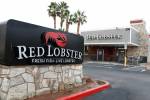Sands ‘Summit’ at Nevada State Museum concludes ‘Copa Connection’ series





The 1960 “Summit at the Sands” made showroom — and showbiz — history with its Rat Pack rendezvous, as Frank Sinatra, Dean Martin, Sammy Davis Jr. and pals cavorted by night and filmed “Ocean’s Eleven” by day.
Now, almost two decades after the legendary Strip casino went kaboom (it was imploded in November 1996, about three months after it closed), a “Summit About the Sands” explores its ongoing legacy.
At 1 p.m. Saturday at the Nevada State Museum, “The Sands: A Place in the Sun” will feature four experts who will assess the Sands’ place in Las Vegas history. (A book signing and reception will follow, featuring the Thurston Howles Band performing Copa Room tunes.)
It’s the kickoff event for a monthlong exhibit (also dubbed “The Sands: A Place in the Sun”) showcasing an array of Sands memorabilia, from ashtrays and postcards to keno tickets, dice and LPs (remember them?) recorded live in the Copa Room by everyone from Wayne Newton to Tommy Sands (who was, at the time of the “Summit,” Frank Sinatra’s son-in-law).
The panel discussion also serves as the beginning of the end for the Junior League of Las Vegas’ four-part “Copa Connection” series, which began in April with a “Meet the Copa Girls” reception, followed by a Copa Room concert and a Sinatra centennial celebration.
“Previously, the entertainers provided the entertainment,” observes Michael Green, associate professor of history at UNLV, who will moderate Saturday’s panel. “This time, three very entertaining historians” will present “some of their knowledge, specialized and otherwise, to put this in perspective.”
Add that to the “great photographs, great objects and artifacts” on display, he adds, and “in a sense, we’re taking the show on the road.”
Plenty of other legendary Strip casinos have cashed in their chips, but the Sands retains a special allure, according to Green and his fellow “Place in the Sun” panelists: Su Kim Chung, UNLV’s manuscript librarian and author of “Las Vegas: Then and Now”; Larry Gragg, author of “Bright Light City: Las Vegas in Popular Culture,” who teaches at Missouri University of Science and Technology; and UNLV history professor Eugene Moehring, whose books include “A Las Vegas Centennial History” (which Green co-authored) and “Reno, Las Vegas and the Strip: A Tale of Three Cities.”
For Chung, “one reason the Sands has maintained its mystique is because of the entertainers it featured — when you think of the Sands you automatically think of the Rat Pack.”
That Rat Pack connection gives the Sands “an aura of ‘cool’ that other hotels can’t compete with,” she says. “Regardless of the fact that each one of those entertainers performed separately before and after their time at the Sands, it’s the images of them clowning around on stage at the Copa Room that really evokes that ‘classic’ age of Las Vegas Strip entertainment.”
One reason their “Summit” happened at the Sands: entertainment director Jack Entratter, whose connections at the original Copa, New York’s famed Copacabana nightclub, gave the Sands’ Copa Room an “extra edge” in luring big-name entertainment.
That in turn brought big-time gamblers to the casinos, Green says.
The issue was not their talent so much as “whether they brought in the big players,” he says, noting “there were some big-name entertainers who flopped. These guys brought in the whales.”
The rise of television also played a role in fostering the Sands mystique, according to Moehring.
“TV was still in its infancy,” but references to “The Copa” cropped up on “The Danny Thomas Show” when Thomas’ character (dubbed Danny Williams) “constantly referred to going to work at ‘The Copa,’ ” Moehring says. “Yes, Jack Entratter first met Danny Thomas at the Copacabana in New York City, but Thomas opened the Sands’ Copa Room for Entratter in December 1952 and was a frequent headliner there for years — and constantly referred to it on his TV show.”
With late-night TV options limited at the time, “most viewers watched Johnny Carson, who not only played the Sahara himself on many weekends, but let Sammy, Frank, Dean and others plug their upcoming two-week engagement at the Sands,” Moehring adds. “Johnny had agenda-setting power for many viewers who enjoyed live entertainment and would plan a vacation to Las Vegas just to see Sinatra, Dean, Sammy, Nat King Cole and other truly major stars in person.”
Dedee Nave, the Junior League’s “Copa Connection” program director, remembers how her family would hit the road to Vegas, traveling on Route 66 from Indianapolis, to see the stars.
Indeed, a “little table card” from one of Dean Martin’s Sands gigs sparked Nave’s idea for the Copa series, which was funded by a grant from the Commission for the Las Vegas Centennial.
The Sands’ attention-grabbing entertainment lineup — and publicist Al Freeman’s canny promotion of those starry performers — “turned Las Vegas from the cowboy thing and the divorce thing into a cool and sophisticated place that drew a high-end crowd, which in turn drew their money,” she points out.
It also drew everyday folks — including Nave’s family — who “would go to the Sands to see the celebrities watching the celebrities,” she says.
Photographs featured at the “Copa Connection” programs illustrate her point, showing such Hollywood luminaries as Marilyn Monroe, Humphrey Bogart, Lauren Bacall, Judy Garland and Doris Day in the Copa Room audience.
There’s even a shot of Entratter with future President John F. Kennedy, whose presence signaled changing times — and attitudes — toward the entertainers who played the Sands.
Because “a lot of the Sands’ major headliners were ethnics — hyphenated Americans who were Catholics and Jews as well as African-American entertainers like Sammy and Nat King Cole,” their success showed “these groups were finally gaining acceptance by American WASPs in the years after World War II,” Moehring notes.
After all, “Frank, Dean and Sammy were not only ‘cool’ but also some of the hottest stars at the time in show business,” he says. “By making the Sands their home, these top headliners set it apart from the other Strip hotels whose stable of stars were popular but not as hot.”
As a result, “the Sands symbolized how maverick Las Vegas helped lead postwar America culturally in a new direction,” he explains, “not just in terms of legitimizing gambling, 24-hour bars and other traditional taboos, but also in the social acceptance” of Jews, Italians, Irish Catholics and African-Americans.
Both Saturday’s panel and the monthlong exhibit will help Las Vegans to “become more aware of their own memories,” Green suggests — and how those memories are part of history. It’s “the kind of exhibit that you have to stop, look and think.”
Contact reporter Carol Cling at ccling@reviewjournal.com or 702-383-0272.
Preview
“The Sands: A Place in the Sun”
1 p.m. Saturday panel discussion; exhibit continues through Nov. 24
Nevada State Museum, 309 S. Valley View Blvd.
Free, but reservations required for panel (call 702-822-8735 to register as museum guest)


















